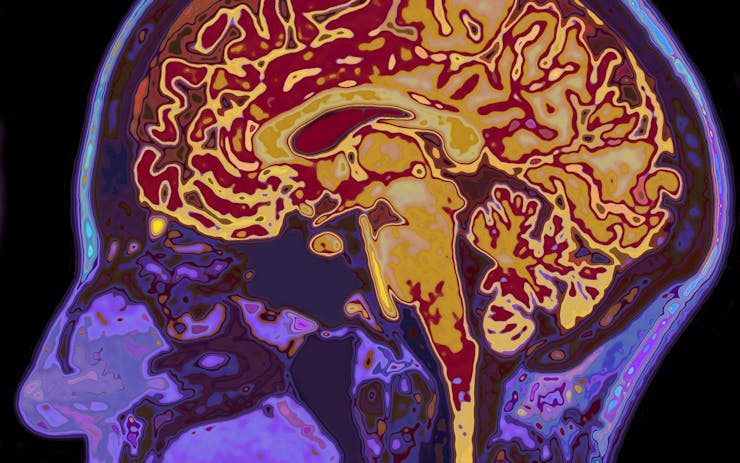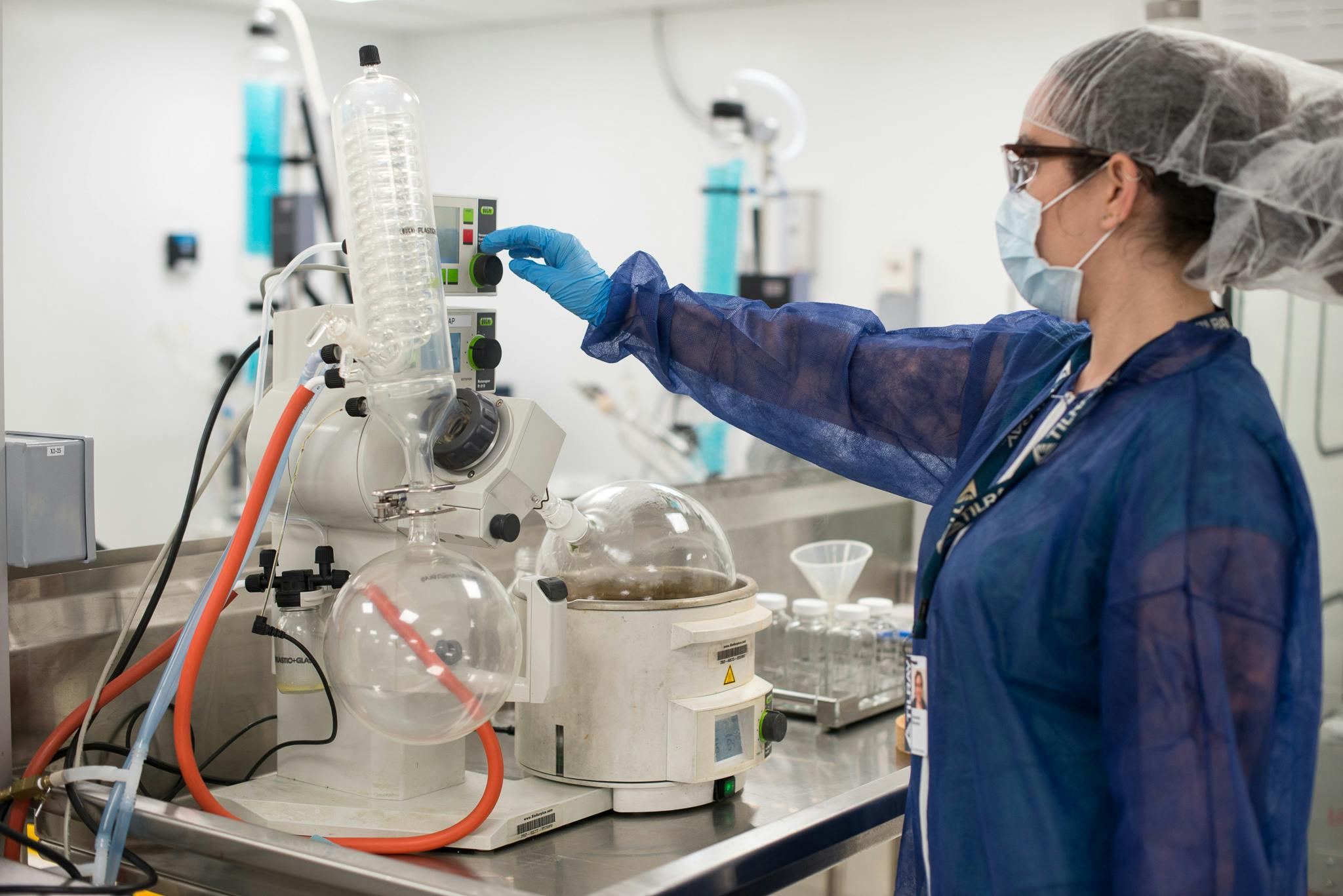Each year, around 2 million Americans experience a sport-related traumatic brain injury (TBI). Soldiers are also at elevated risk for TBI; 17% of deployed soldiers to Iraq experienced a TBI, and among them, 59% experienced multiple TBIs. On a less overt level, our stress levels are on the rise. And to make matters worse, there’s a direct link between stress and increased risk for cardiovascular effects like heart attack and stroke. Both brain injury and cardiovascular events elevate risk for age-related brain disease like dementia.
Do we have tools at our disposal to mitigate these risks? Sure. Proper nutrition, maintaining healthy body weight, and regular exercise all help. Helmets do, too. But a growing body of research over the last couple decades suggests that there’s another potential strategy to making the brain more resilient to the damaging effects of injury, the changes associated with stress, and the effects of age. It involves cannabis.
What Happens When the Brain Is Injured?
It seems intuitive that the greatest amount of brain damage occurs at the time of physical trauma. But for most closed head injuries and cardiovascular events, the majority of damage occurs during the recovery period—minutes to days after the injury. It’s this delayed response that inflicts long-term havoc on the brain.
Many current strategies to protect the brain after injury act to reduce this secondary response to injury, but by the time these interventions are initiated, it may be too late. A better strategy would be to intervene before the trauma in at-risk individuals to weaken the brain’s own damaging response should one occur. Some elements in cannabis, like THC and especially cannabidiol (CBD), seem ideal for such a task.
There are three general mechanisms that damage the brain in the period after the trauma, and it’s thought that THC and CBD can protect against each:
- Increase in excitatory brain chemicals. Injury causes the massive release of the excitatory brain chemical, glutamate. Glutamate plays an important role in an uninjured brain, but its levels need to be tightly regulated. Too much glutamate can kill brain cells, which is what can happen following injury.
- Increase in free radicals. Injury releases harmful chemicals called free radicals that cause damage to brain cells by damaging DNA, impairing the cell’s machinery, and even causing cell death. Free radicals are a byproduct of normal cell function and we have mechanisms of neutralizing them to limit damage. But after injury, their levels become so high that only potent anti-oxidants can limit their damaging effects.
- Increase in brain inflammation. Injury activates the brain’s inflammatory response to repair the damage. Unfortunately, this repair process can cause permeant changes in the way brain cells communicate with one another. It’s becoming increasingly appreciated that brain inflammation contributes to the development of age-related diseases like Alzheimer’s and dementia. Therefore, the tools used to protect the brain from secondary injury may also prevent or reduce the severity of cognitive decline with age.’
How Cannabis Can Help Prevent Damage in the Brain
The endocannabinoid system provides a framework for many of cannabis’ protective benefits. The cannabinoid type I and II receptors (CB1 and CB2) are powerful regulators of glutamate release, can be anti-inflammatory, and facilitate anti-oxidant effects.
In support of THC’s protective benefits, TBI patients with THC in their blood were more likely to survive their injury than those without.
This important role for CB receptors supports the benefits of THC, which directly activates CB1 and CB2 receptors, and CBD, which indirectly activates them. CB1 receptors are found on brain cells and their activation by endogenous cannabinoids or THC dampens their communication.
Particularly, CB1 receptors have a profound ability to reduce glutamate release, highlighting the potential for prominent cannabinoids to suppress the harmful effects of glutamate following brain trauma. Since excessive glutamate signaling is a main contributor to early stage damage after brain injury, this is an important place to start to limit the risk of severe brain damage and even death.
In support of THC’s protective benefits, TBI patients with THC in their blood were more likely to survive their injury than those without (only 2% of those with THC in their blood did not survive their injury, compared to 12% without THC).
Low doses of THC can be anti-inflammatory, but high-doses may increase inflammation, which highlights the importance of proper dosing.
THC’s protection against brain damage has also been observed in controlled pre-clinical studies with lab animals. Mice who underwent a simulated stroke had fewer signs of brain damage if they were given either THC or CBD prior to stroke, but only CBD was effective at reducing signs of damage if given afterwards. Importantly, mice given THC for two weeks prior to a stroke developed tolerance to its brain-protecting abilities. This tolerance isn’t observed with repeated CBD treatment, suggesting that CBD may be a better long-term protective strategy because its strength doesn’t decrease with repeated use, and its protective abilities continue after the damaging event.
How were THC and CBD protective? Reduced glutamate signaling protects brain cells from dying after an injury and cardiovascular event. But the potential for behavioral recovery also depends on the levels of free radicals and brain inflammation. Low doses of THC can be anti-inflammatory, but high-doses may increase inflammation, which highlights the importance of proper dosing.
Cannabis Protects Against Subtle Brain Changes, Too
Cannabis may also make the brain more resilient to the harmful effects of chronic stress and the aging process. Both chronic stress and aging are associated with a reduction in new brain cell production in a brain region called the hippocampus, one of two known brain areas where new brain cells are produced in adulthood. These new brain cells are important for many brain functions including learning and memory, reducing anxiety and depression, and keeping the body’s stress response in check.
Activating CB1 receptors can facilitate the growth of new brain cells. In part through this mechanism, low doses of THC can preserve cognitive abilities in old mice by protect the brain from age-related changes (covered previously by Leafly). CBD can indirectly activate CB1 receptors by increasing levels of the endogenous cannabinoid, anandamide. It’s in part through this increase in anandamide levels that CBD is thought to protect against the damaging effects of chronic stress on the brain.
More studies are needed to identify dose and duration of cannabis use to achieve maximum protective benefits, and whether there are some conditions in which cannabis could exacerbate the damage to the brain. But in the meantime, many may needlessly suffer the long-term consequences of brain trauma.






